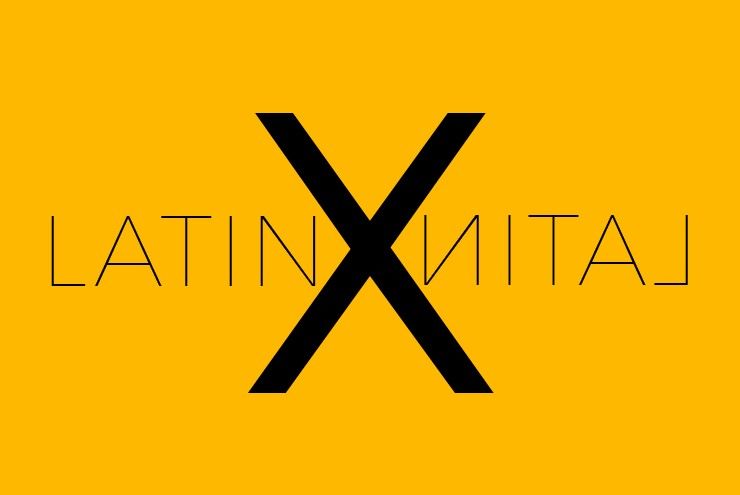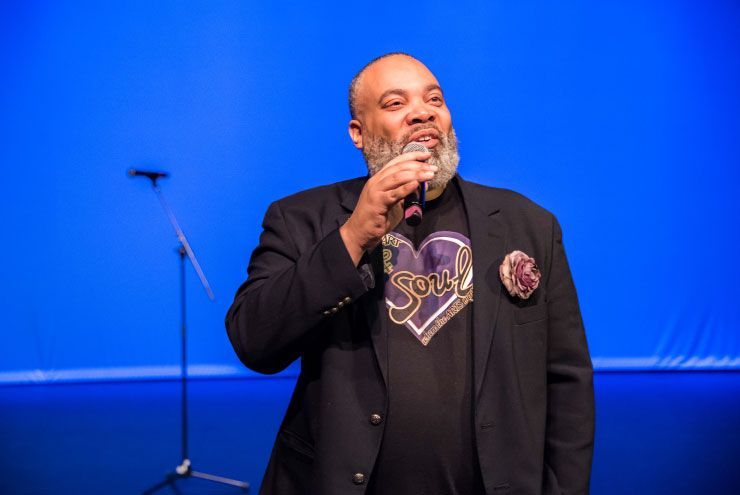By Josh Inocéncio
“Well, I guess your main character should be referred to as Latinx rather than Latino, right?” said a colleague after a reading of my 10-minute play, Ofélio, earlier this year.
“Oh, that’s a whole other debate,” I demurred, anxiously avoiding a public showdown over the term Latinx at a theatre conference.
In the past few years, “Latinx” has stormed to prominence—first in online communities, then in mainstream media platforms as well as academic discourse. “Latinx” seeks to end the gendered designations in the Spanish language, replacing “Latino” and “Latina” with a term that includes both genders, as well as gender nonconforming and non-binary people.
For those unfamiliar with Spanish grammar, words ending with “o” and “a” typically indicate a masculine or feminine word, respectively. Thus, before the arrival of Latinx, people commonly used “Latina/o” or “Latin@” to include both Latinos and Latinas. However, these terms are rapidly losing influence as Latinx overtakes the conversation on identity.
So why am I being so stodgy about a term that, on its face, appears inclusive?
Four reasons, really.
First, the pronunciation of the letter “x” at the end Anglicizes (i.e., whitewashes) the terms Latino and Latina. While some folks do say “Latin-equis,” which is the Spanish sound for the letter x, the most popular pronunciation is currently the English way. Thus, Latino and Latina, which are easily pronounced with U.S. American and Latin American accents, are losing traction to the more Anglicized Latinx. Instead, I’m not sure why we don’t use “Latine,” which is more consistent with Spanish pronunciations and is gender neutral.
The x is also creating a grammatical headache for words beyond the gender-neutral descriptor. In online dialogues, people are applying the x to other words, such as “mis amigxs” instead of “mis amigos” or “mis amigas.” There’s no sound way to pronounce “amigxs” in Spanish.
Now, the gender structures built into a language certainly inculcate sexist assumptions. For example, in German (a language I speak as well as Spanish), there is der, die, and das, which are masculine, feminine, and neutral articles, respectively. An adult man is der Mann, an adult woman is die Frau, a young boy is der Junge, but a young girl is das Mädchen. Thus, while male children have full masculine descriptors, female children possess a neutral subjectivity until they are of marriageable age. Spanish, with its arbitrary designation of gender to objects, carries similar issues. But if Spanish speakers seek to avoid the language’s gendered assumptions, then they should make the language at least as genderless as English. In 2014, with German governmental efforts to use more gender-neutral language, a group actually petitioned to change all articles to simply das. Rather than lazily adding an x to identity descriptors, those interested should seek to change the ways in which we use the Spanish language altogether.
Second, while Latinx is a stab at including gender nonconforming and non-binary folks in Spanish, my fear is that the easy switch from “a/o” to “x” is a peremptory pat on the back for people to feel as if they’re doing enough in the fight to curb discrimination and murders against transgender and gender nonconforming people of Latin American descent. While use of language forms our most basic exchanges with each other, a letter change alone isn’t reducing the deaths of and violence toward trans women of color.
In addition, the x potentially erases the groups it seeks to presence. With the popular rise of the x, I see straight, cisgender folks all identifying as Latinx instead of either Latino or Latina. To avoid appropriation, we need to reserve Latinx for gender nonconforming and non-binary people. In an age where we all account for privilege as well as marginalization, isn’t it crucial for a cisgender male like myself to describe himself as Latino?
Third, do you know how hard my tías would slap me if I used Latinx in front of them? After all, many of them still prefer Hispanic over Latino! Jokes aside, I’m not saying our identity markers shouldn’t evolve over time—most groups change their names each generation. But as many people, particularly in Texas, still wrestle with Hispanic versus Latino (or even Hispanic versus Latin), the dominance of Latinx arrives at an already divisive time, demonstrating that people of Latin American descent in the United States are nowhere near close to agreeing on a collective term.
And fourth, while I have issues with the term itself (see above), my greatest concern is how imperiously advocates of Latinx have dismissed other terms with little debate. If well meaning Latinos and Latinas don’t use the term publicly, they’re often denounced as transphobic. If they’re from an older generation, then they’re just outdated. If they’re white, then they’re just racist. Without a measured consideration of why many people still prefer Latina/o or Latin@ (or even Hispanic), we deteriorate political discourse in this country by shutting each other down with name-calling.
I will call people what they wish to be called. If the gender nonconforming and non-binary folks I know wish to be called Latinx, then that’s that. And I expect the same in return when I refer to myself as a Latino. I may not like the term, even though I understand its significance in contemporary Latina/o discourse.
But most importantly, it’s crucial that we don’t divide ourselves over who uses Latinx and who doesn’t. These kinds of cultural battles are only distracting us from bigger issues, such as how queer Latinas/os still experience systemic homophobia and transphobia. And with a population as diverse as those of Latin American descent in the U.S., we would do better to listen and create dialogue, rather than demand all of us to fit under an umbrella term.







